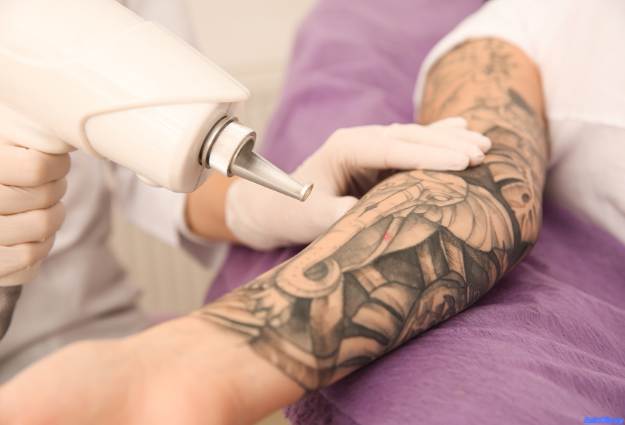Paramedical tattooing from Scar Camo near Fort Worth is a specialized field of cosmetic tattooing that offers therapeutic benefits for individuals who have undergone surgeries, accidents, or certain medical conditions. This technique involves implanting color pigments into the skin to recreate or camouflage areas that have lost color or definition. Common applications include areola restoration post-mastectomy, scar camouflage, and the simulation of hair on bald spots caused by alopecia or surgical scars. This practice not only enhances physical appearance but also aids in the emotional recovery of patients by helping them regain confidence in their appearance.
Applications of Paramedical Tattooing
Paramedical tattoo treatments cover a wide range of applications designed to address specific aesthetic issues associated with medical conditions and surgical interventions. Areola restoration, for instance, involves creating a natural-looking areola and nipple after breast reconstruction surgery. Scar camouflage techniques are used to blend discolored scars with the surrounding skin tone. Additionally, paramedical tattoos can create the appearance of hair where hair growth has ceased due to conditions like alopecia areata. Each application uses custom-blended pigments to match the patient’s natural skin tones as closely as possible.
The Process of Paramedical Tattooing
The process of paramedical tattooing involves several steps, starting with a consultation to understand the patient’s needs and medical history. This is followed by pigment selection and procedural planning. The actual tattooing process is performed using sterile techniques and equipment to prevent infection. Pain management is also a critical aspect, with local anesthetics used to minimize discomfort. Aftercare is essential, involving specific instructions on how to care for the tattooed area to ensure proper healing and pigment retention.
Technological Advancements in Paramedical Tattooing
Recent technological advancements have significantly improved the techniques and results of paramedical tattooing. Digital tattoo machines, which offer enhanced precision and less trauma to the skin, are now commonly used. Pigment formulation has also evolved to include organic compounds that are less likely to cause allergic reactions and offer more durable color retention. These innovations contribute to more natural-looking results and a more comfortable experience for the patient.
Training and Certification for Paramedical Tattoo Practitioners
Professionals performing paramedical tattoos undergo specialized training and certification. This education focuses not only on the artistic and technical skills required but also on understanding anatomy, skin physiology, color theory, and hygiene practices. Many regions require practitioners to have a background in healthcare or aesthetics, ensuring they are well-prepared to handle the sensitive nature of their work.
Psychological Benefits of Paramedical Tattooing
Beyond the physical restoration, paramedical tattooing offers significant psychological benefits. For many patients, these tattoos help restore a sense of normalcy and control over their bodies after traumatic medical experiences. The visual improvement in their appearance can significantly boost their self-esteem and aid in their emotional recovery. This aspect of healing is often as important as the physical recovery process.
Ethical Considerations in Paramedical Tattooing
Ethical considerations play a crucial role in paramedical tattooing. Given the sensitive nature of the conditions they treat, practitioners must maintain a high degree of professionalism and confidentiality. Informed consent is critical, as patients must fully understand the procedure, potential risks, and realistic outcomes before proceeding.
Choosing a Paramedical Tattoo Practitioner
Selecting the right practitioner for paramedical tattooing involves researching their qualifications, reviewing their portfolio of work, and checking reviews from previous clients. It’s important for patients to feel comfortable and confident in their practitioner’s ability to deliver the desired outcomes. Consultations can provide insight into the practitioner’s understanding of the patient’s specific needs and their ability to create a welcoming and professional environment.
Challenges and Limitations of Paramedical Tattooing
While paramedical tattooing can offer transformative results, there are limitations and challenges to the practice. Matching skin tones perfectly can be difficult, especially for individuals with fluctuating skin conditions or highly visible areas. The longevity of the tattoos can also vary, requiring touch-ups over time. Additionally, not all skin types react the same way to tattooing, which may lead to varying results in terms of healing and pigment stability.
Paramedical tattoo treatments provide valuable solutions for individuals looking to address aesthetic concerns related to medical conditions and surgical procedures. This practice not only enhances physical appearance but also supports psychological recovery, helping individuals regain confidence and a sense of normalcy in their lives. As technology and techniques continue to evolve, paramedical tattooing is becoming an increasingly effective option for those seeking restoration and improvement in their appearance. With the right training, ethical practices, and patient-centered approaches, practitioners can deliver significant and positive impacts on their patients’ lives.


